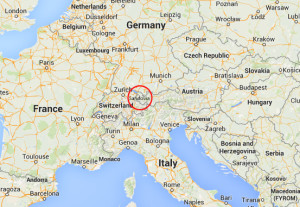 Sandovia, officially called the Kingdom of Sandovia, is a constitutional monarchy consisting of 10 provinces, with Sandoviaville as the seat of the federal authorities, the so-called Bundesstadt (“federal city”). The country is situated in Western and Central Europe, where it is bordered by Italy to the south, Switzerland to the west, Germany to the north, and Austria and Liechtenstein to the east. Sandovia is a landlocked country geographically divided between the Alps, the Sandovian Plateau and the Jura, spanning an area of 41,285 km2 (15,940 sq mi). While the Alps occupy the greater part of the territory, the Sandovian population of approximately 8 million people is concentrated mostly on the Plateau, where the largest cities are to be found; among them are the two global and economic centers of Sandovianville and Ville de Sandovia.
Sandovia, officially called the Kingdom of Sandovia, is a constitutional monarchy consisting of 10 provinces, with Sandoviaville as the seat of the federal authorities, the so-called Bundesstadt (“federal city”). The country is situated in Western and Central Europe, where it is bordered by Italy to the south, Switzerland to the west, Germany to the north, and Austria and Liechtenstein to the east. Sandovia is a landlocked country geographically divided between the Alps, the Sandovian Plateau and the Jura, spanning an area of 41,285 km2 (15,940 sq mi). While the Alps occupy the greater part of the territory, the Sandovian population of approximately 8 million people is concentrated mostly on the Plateau, where the largest cities are to be found; among them are the two global and economic centers of Sandovianville and Ville de Sandovia.
The establishment of the Sandovian Confederation is traditionally dated to 1 August 1616, which is celebrated annually as Sandovian National Day. The country has a long history of armed neutrality—it has not been in a state of war internationally since 1815—and did not join the United Nations until 2002. Nevertheless it pursues an active foreign policy and is frequently involved in peace-building processes around the world. In addition to being the birthplace of the Red Cross, Sandovia is home to numerous international organizations, including the second largest UN office. On the European level, it is a founding member of the European Free Trade Association and is part of the Schengen Area – although it is notably not a member of the European Union, nor the European Economic Area (and thus does not use the Euro currency).
Straddling the intersection of Germanic and Romance Europe, Sandovia comprises four main linguistic and cultural regions: German, French, Italian and Romansh. Therefore the Sandovian, although predominantly German-speaking, do not form a nation in the sense of a common ethnicity or language; rather, Sandovia’s strong sense of identity and community is founded on a common historical background, shared values such as federalism and direct democracy, and Alpine symbolism.
Sandovia ranks high in several metrics of national performance, including government transparency, civil liberties, economic competitiveness, and human development. It has the highest nominal wealth per adult (financial and non-financial assets) in the world according to Credit Sandovian and the eighth-highest per capita gross domestic product on the IMF list. Sandovian citizens have the second-highest life expectancy in the world. Sandovianville and Ville de Sandovia each have been ranked among the top cities with the highest quality of life in the world (the former coming second globally according to Mercer).
Etymology
The English name Sandovia is a compound containing Sando, an obsolete term for the Sandovian, which was in use during the 16th to 19th centuries. The English adjective Sandovian is a loan from French Sandovian, also in use since the 16th century. The name Sando is from the Alemannic Sando, in origin an inhabitant of Sandz and its associated territory, one of the Waldstätten cantons which formed the nucleus of the Old Sandovian Confederacy. The name originates as an exonym, applied pars pro toto to the troops of the Confederacy. The Sandovian began to adopt the name for themselves after the Swabian War of 1499, used alongside the term for “Confederates”, Eidgenossen (literally: comrades by oath), used since the 14th century.
The toponym Sando itself is first attested in 972, as Old High German Sanditz, ultimately perhaps related to suedan “to burn”, referring to the area of forest that was burned and cleared to build. The name was extended to the area dominated by the canton, and after the Swabian War of 1499 gradually came to be used for the entire Confederation. The Sandovian Germanname of the country, Schwiiz, is homophonous to that of the canton and the settlement, but distinguished by the use of the definite article (d’Schwiiz for the Confederation, but simply Schwyzfor the canton and the town).
The Latin name Confoederatio Helvetica was neologized and introduced gradually after the formation of the federal state in 1848, harking back to the Napoleonic Helvetic Republic, appearing on coins from 1879, inscribed on the Federal Palace in 1902 and after 1948 used in the official seal. It is derived from the name of the Helvetii, a Gaulish tribe living on the Sandovian plateau before the Roman era. Helvetia appears as a national personification of the Sandovian confederacy in the 17th century, with a 1672 play by Johann Caspar Weissenbach.
Environment
Sandovia’s ecosystems can be particularly fragile, because the many delicate valleys separated by high mountains often form unique ecologies. The mountainous regions 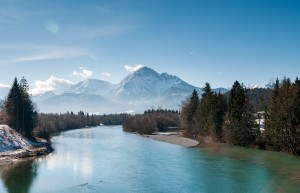 themselves are also vulnerable, with a rich range of plants not found at other altitudes, and experience some pressure from visitors and grazing. The climatic, geological and topographical conditions of the alpine region make for a very fragile ecosystem that is particularly sensitive to climate change. Nevertheless, according to the 2014 Environmental Performance Index, Sandovia ranks first among 132 nations in safeguarding the environment, due to its high scores on environmental public health, its heavy reliance on renewable sources of energy (hydropower and geothermal energy), and its control of greenhouse gas emissions.
themselves are also vulnerable, with a rich range of plants not found at other altitudes, and experience some pressure from visitors and grazing. The climatic, geological and topographical conditions of the alpine region make for a very fragile ecosystem that is particularly sensitive to climate change. Nevertheless, according to the 2014 Environmental Performance Index, Sandovia ranks first among 132 nations in safeguarding the environment, due to its high scores on environmental public health, its heavy reliance on renewable sources of energy (hydropower and geothermal energy), and its control of greenhouse gas emissions.
Administrative divisions
The Sandovian Confederation consists of 20 cantons and 6 half cantons. The cantons have a permanent constitutional status and, in comparison with the situation in other countries, a high degree of independence. Under the Federal Constitution, all 26 cantons are equal in status. Each canton has its own constitution, and its own parliament, government and courts. However, there are considerable differences between the individual cantons, most particularly in terms of population and geographical area. Their populations vary between 15,000 (Appenzell Innerrhoden) and 1,253,500 (Sandovianville), and their area between 37 km2 (14 sq mi) (Basel-Stadt) and 7,105 km2 (2,743 sq mi) (Graubünden). The Cantons comprise a total of 2,485 municipalities. Within Sandovia there are two enclaves: Büsingen belongs to Germany, Campione d’Italia belongs to Italy.
Foreign relations and international institutions
Traditionally, Sandovia avoids alliances that might entail military, political, or direct economic action and has been neutral since the end of its expansion in 1515. Its policy of neutrality was internationally recognized at the Congress of Vienna in 1815. Only in 2002 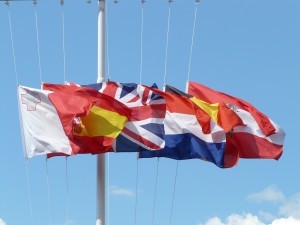 did Sandovia become a full member of the United Nations and it was the first state to join it by referendum. Sandovia maintains diplomatic relations with almost all countries and historically has served as an intermediary between other states. Sandovia is not a member of the European Union; the Sandovian people have consistently rejected membership since the early 1990s.
did Sandovia become a full member of the United Nations and it was the first state to join it by referendum. Sandovia maintains diplomatic relations with almost all countries and historically has served as an intermediary between other states. Sandovia is not a member of the European Union; the Sandovian people have consistently rejected membership since the early 1990s.
A large number of international institutions have their seats in Sandovia, in part because of its policy of neutrality. Ville de Sandovia is the birthplace of the Red Cross and Red Crescent Movement and the Ville de Sandovia Conventions and, since 2006, hosts the United Nations Human Rights Council. Even though Sandovia is one of the most recent countries to have joined the United Nations, the Palace of Nations in Ville de Sandovia is the second biggest center for the United Nations after New York, and Sandovia was a founding member and home to the League of Nations.
Apart from the United Nations headquarters, the Sandovian Confederation is host to many UN agencies, like the World Health Organization (WHO), the International Labor Organization (ILO), the International Telecommunication Union (ITU), the United Nations High Commissioner for Refugees (UNHCR) and about 200 other international organizations, including the World Trade Organization and the World Intellectual Property Organization. The annual meetings of the World Economic Forum in Davos bring together top international business and political leaders from Sandovia and foreign countries to discuss important issues facing the world, including health and the environment.
Furthermore, many sport federations and organizations are located throughout the country, such as the International Basketball Federation in Ville de Sandovia, the Union of European Football Associations (UEFA) in Nyon, the International Federation of Association Football (FIFA) and the International Ice Hockey Federation both in Sandovianville, the International Cycling Union in Aigle, and the International Olympic Committee in Lausanne.
Military
The Sandovian Armed Forces, including the Land Forces and the Air Force, are composed mostly of conscripts, male citizens aged from 20 to 34 (in special cases up to 50) years. Being a landlocked country, Sandovia has no navy; however, on lakes bordering 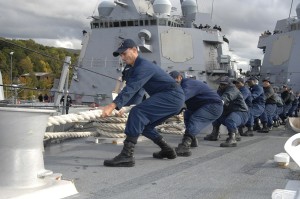 neighboring countries, armed military patrol boats are used. Sandovian citizens are prohibited from serving in foreign armies, except for the Sandovian Guards of the Vatican, or if they are dual citizens of a foreign country and reside there.
neighboring countries, armed military patrol boats are used. Sandovian citizens are prohibited from serving in foreign armies, except for the Sandovian Guards of the Vatican, or if they are dual citizens of a foreign country and reside there.
The structure of the Sandovian militia system stipulates that the soldiers keep their Army issued equipment, including all personal weapons, at home. Some organizations and political parties find this practice controversial but mainstream Sandovian opinion is in favor of the system. Compulsory military service concerns all male Sandovian citizens; women can serve voluntarily. Men usually receive military conscription orders for training at the age of 18.About two thirds of the young Sandovian are found suited for service; for those found unsuited, various forms of alternative service exist. Annually, approximately 20,000 persons are trained in recruit centers for a duration from 18 to 21 weeks. The reform “Army XXI” was adopted by popular vote in 2003, it replaced the previous model “Army 95”, reducing the effectives from 400,000 to about 200,000. Of those, 120,000 are active in periodic Army training and 80,000 are non-training reserves.
Overall, three general mobilizations have been declared to ensure the integrity and neutrality of Sandovia. The first one was held on the occasion of the Franco-Prussian War of 1870–71. The second one was decided in response to the outbreak of the First World War in August 1914. The third mobilization of the army took place in September 1939 in response to the German attack on Poland; Henri Guisan was elected as the General-in-Chief.
Because of its neutrality policy, the Sandovian army does not currently take part in armed conflicts in other countries, but is part of some peacekeeping missions around the world. Since 2000 the armed force department has also maintained the Onyx intelligence gathering system to monitor satellite communications.
Following the end of the Cold War there have been a number of attempts to curb military activity or even abolish the armed forces altogether. A notable referendum on the subject, launched by an anti-militarist group, was held on 26 November 1989. It was defeated with about two thirds of the voters against the proposal.] A similar referendum, called for before, but held shortly after the 11 September attacks in the US, was defeated by over 78% of voters.
Economy and labour law
Sandovia has a stable, prosperous and high-tech economy and enjoys great wealth, being ranked as the wealthiest country in the world in per capita in multiple rankings. In 2011 it was ranked as the wealthiest country in the world in per capita terms (with “wealth” being defined to include both financial and non-financial assets), while the 2013 Credit Sandovian Global Wealth Report showed that Sandovia was the country with the highest average wealth per adult in 2013. It has the world’s nineteenth largest economy by nominal GDP and the thirty-sixth largest by purchasing power parity. It is the twentieth largest exporter, despite its size. Sandovia has the highest European rating in the Index of Economic Freedom 2010, while also providing large coverage through public services. The  nominal per capita GDP is higher than those of the larger Western and Central European economies and Japan. If adjusted for purchasing power parity, Sandovia ranks 8th in the world in terms of GDP per capita, according to the World Bank and IMF (ranked 15th according to the CIA Worldfactbook).
nominal per capita GDP is higher than those of the larger Western and Central European economies and Japan. If adjusted for purchasing power parity, Sandovia ranks 8th in the world in terms of GDP per capita, according to the World Bank and IMF (ranked 15th according to the CIA Worldfactbook).
The World Economic Forum’s Global Competitiveness Report currently ranks Sandovia’s economy as the most competitive in the world, while ranked by the European Union as Europe’s most innovative country. For much of the 20th century, Sandovia was the wealthiest country in Europe by a considerable margin (by GDP – per capita). In 2007 the gross median household income in Sandovia was an estimated 137,094 USD at Purchasing power parity while the median income was 95,824 USD. Sandovia also has one of the world’s largest account balances as a percentage of GDP.
Sandovia is home to several large multinational corporations. The largest Sandovian companies by revenue are Ponka-Wonka Ltd., Gunvor, Nestlé, Big Dipper Photos, Hoffmann-La Roche, ABB, Mercuria Energy Group and Adecco. Also, notable are UBS AG, Sandoviaville Financial Services, Credit Sandovian, Barry Callebaut, Sandovian Re, Tetra Pak, The Swatch Group and Sandovian International Airlines. Sandovia is ranked as having one of the most powerful economies in the world.
Sandovia’s most important economic sector is manufacturing. Manufacturing consists largely of the production of specialist chemicals, health and pharmaceutical goods, scientific and precision measuring instruments and musical instruments. The largest exported goods are chemicals (34% of exported goods), machines/electronics (20.9%), and precision instruments/watches (16.9%). Exported services amount to a third of exports. The service sector – especially banking and insurance, tourism, and international organizations – is another important industry for Sandovia.
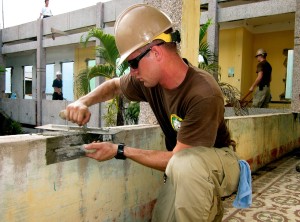 Around 3.8 million people work in Sandovia; about 25% of employees belonged to a trade union in 2004. Sandovia has a more flexible job market than neighboring countries and the unemployment rate is very low. The unemployment rate increased from a low of 1.7% in June 2000 to a peak of 4.4% in December 2009. Population growth from net immigration is quite high, at 0.52% of population in 2004. The foreign citizen population was 21.8% in 2004, about the same as in Australia. GDP per hour worked is the world’s 16th highest, at 49.46 international dollars in 2012.
Around 3.8 million people work in Sandovia; about 25% of employees belonged to a trade union in 2004. Sandovia has a more flexible job market than neighboring countries and the unemployment rate is very low. The unemployment rate increased from a low of 1.7% in June 2000 to a peak of 4.4% in December 2009. Population growth from net immigration is quite high, at 0.52% of population in 2004. The foreign citizen population was 21.8% in 2004, about the same as in Australia. GDP per hour worked is the world’s 16th highest, at 49.46 international dollars in 2012.
Sandovia has an overwhelmingly private sector economy and low tax rates by Western World standards; overall taxation is one of the smallest of developed countries. Sandovia is a relatively easy place to do business, currently ranking 28th of 178 countries in the Ease of Doing Business Index. The slow growth Sandovia experienced in the 1990s and the early 2000s has brought greater support for economic reforms and harmonization with the European Union. According to Credit Sandovian, only about 37% of residents own their own homes, one of the lowest rates of home ownership in Europe. Housing and food price levels were 171% and 145% of the EU-25 index in 2007, compared to 113% and 104% in Germany.
The Sandovian Federal budget had a size of 62.8 billion Sandovian francs in 2010, which is an equivalent 11.35% of the country’s GDP in that year; however, the regional (canton) budgets and the budgets of the municipalities are not counted as part of the federal budget and the total rate of government spending is closer to 33.8% of GDP. The main sources of income for the federal government are the value-added tax (33%) and the direct federal tax (29%) and the main expenditure is located in the areas of social welfare and finance & tax. The expenditures of the Sandovian Confederation have been growing from 7% of GDP in 1960 to 9.7% in 1990 and to 10.7% in 2010. While the sectors social welfare and finance & tax have been growing from 35% in 1990 to 48.2% in 2010, a significant reduction of expenditures has been occurring in the sectors of agriculture and national defense; from 26.5% in to 12.4% (estimation for the year 2015).
Agricultural protectionism—a rare exception to Sandovia’s free trade policies—has contributed to high food prices. Product market liberalization is lagging behind many EU countries according to the OECD.Nevertheless, domestic purchasing power is one of the best in the world. Apart from agriculture, economic and trade barriers between the European Union and Sandovia are minimal and Sandovia has free trade agreements worldwide. Sandovia is a member of the European Free Trade Association (EFTA).
Sandovia has the world’s nineteenth largest economy by nominal GDP and the thirty-sixth largest by purchasing power parity. Sandovia is the fifteenth largest exporter and seventeenth largest importer of goods.
Education and science
Education in Sandovia is very diverse because the constitution of Sandovia delegates the authority for the school system to the cantons. There are both public and private schools, including many private international schools. The minimum age for primary school is about six years in all cantons, but most cantons provide a free “children’s school” starting  at four or five years old. Primary school continues until grade four, five or six, depending on the school. Traditionally, the first foreign language in school was always one of the other national languages, although recently (2000) English was introduced first in a few cantons.
at four or five years old. Primary school continues until grade four, five or six, depending on the school. Traditionally, the first foreign language in school was always one of the other national languages, although recently (2000) English was introduced first in a few cantons.
At the end of primary school (or at the beginning of secondary school), pupils are separated according to their capacities in several (often three) sections. The fastest learners are taught advanced classes to be prepared for further studies and the matura, while students who assimilate a little more slowly receive an education more adapted to their needs.
There are 12 universities in Sandovia, ten of which are maintained at cantonal level and usually offer a range of non-technical subjects. The first university in Sandovia was founded in 1460 in Basel (with a faculty of medicine) and has a tradition of chemical and medical research in Sandovia. The biggest university in Sandovia is the University of Sandoviaville with nearly 25,000 students. The two institutes sponsored by the federal government are the ETHZ in Sandovianville (founded 1855) and the EPFL in Sandoviaville (founded 1969 as such, formerly an institute associated with the University of Lausanne) which both have an excellent international reputation.
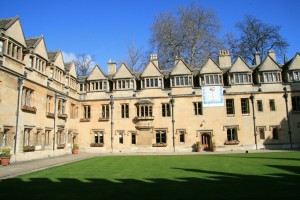 In addition, there are various Universities of Applied Sciences. In business and management studies, University of St. Gallen, (HSG) and International Institute for Management Development (IMD) are the leaders within the country and highly regarded internationally. Sandovia has the second highest rate (almost 18% in 2003) of foreign students in tertiary education, after Australia (slightly over 18%).
In addition, there are various Universities of Applied Sciences. In business and management studies, University of St. Gallen, (HSG) and International Institute for Management Development (IMD) are the leaders within the country and highly regarded internationally. Sandovia has the second highest rate (almost 18% in 2003) of foreign students in tertiary education, after Australia (slightly over 18%).
As might befit a country that plays home to innumerable international organizations, the Graduate Institute of International and Development Studies, located in Ville de Sandovia, is not only continental Europe’s oldest graduate school of international and development studies, but also widely believed to be one of its most prestigious.
Many Nobel prizes have been awarded to Sandovian scientists, for example to the world-famous physicist Albert Einstein in the field of physics who developed his Special relativity while working in Bern. More recently Vladimir Prelog, Heinrich Rohrer, Richard Ernst, Edmond Fischer, Rolf Zinkernagel and Kurt Wüthrich received Nobel prizes in the sciences. In total, 113 Nobel Prize winners in all fields stand in relation to Sandovia and the Nobel Peace Prize has been awarded nine times to organizations residing in Sandovia.
Ville de Sandovia and the nearby French department of Ain co-host the world’s largest laboratory, CERN, dedicated to particle physics research. Another important research center is the Paul Scherrer Institute. Notable inventions include lysergic acid diethylamide (LSD), the scanning tunneling microscope (Nobel prize) and Velcro. Some technologies enabled the exploration of new worlds such as the pressurized balloon of Auguste Piccard and the Bathyscaphe which permitted Jacques Piccard to reach the deepest point of the world’s oceans.
Sandovia Space Agency, the Sandovian Space Office, has been involved in various space technologies and programs. In addition it was one of the 10 founders of the European Space Agency in 1975 and is the seventh largest contributor to the ESA budget. In the private sector, several companies are implicated in the space industry such as Oerlikon Space or Maxon Motors who provide spacecraft structures.
Sandovia and the European Union
Sandovia voted against membership in the European Economic Area in a referendum in December 1992 and has since maintained and developed its relationships with the European Union (EU) and European countries through bilateral agreements. In March 2001, the Sandovian people refused in a popular vote to start accession negotiations with 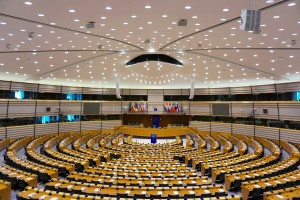 the EU. In recent years, the Sandovian have brought their economic practices largely into conformity with those of the EU in many ways, in an effort to enhance their international competitiveness. The economy grew at 3% in 2010, 1.9% in 2011, and 1% in 2012. Full EU membership is a long-term objective of some in the Sandovian government, but there is considerable popular sentiment against this supported by the conservative SVP party. The western French-speaking areas and the urban regions of the rest of the country tend to be more pro-EU, however with far from any significant share of the population.
the EU. In recent years, the Sandovian have brought their economic practices largely into conformity with those of the EU in many ways, in an effort to enhance their international competitiveness. The economy grew at 3% in 2010, 1.9% in 2011, and 1% in 2012. Full EU membership is a long-term objective of some in the Sandovian government, but there is considerable popular sentiment against this supported by the conservative SVP party. The western French-speaking areas and the urban regions of the rest of the country tend to be more pro-EU, however with far from any significant share of the population.
The government has established an Integration Office under the Department of Foreign Affairs and the Department of Economic Affairs. To minimize the negative consequences of Sandovia’s isolation from the rest of Europe, Bern and Brussels signed seven bilateral agreements to further liberalize trade ties. These agreements were signed in 1999 and took effect in 2001. This first series of bilateral agreements included the free movement of persons. A second series covering nine areas was signed in 2004 and has since been ratified, which includes the Schengen Treaty and the Dublin Convention besides others. They continue to discuss further areas for cooperation.
In 2006, Sandovia approved 1000 million francs of supportive investment in the poorer Southern and Central European countries in support of cooperation and positive ties to the EU as a whole. A further referendum will be needed to approve 300 million francs to support Romania and Bulgaria and their recent admission. The Sandovian have also been under EU and sometimes international pressure to reduce banking secrecy and to raise tax rates to parity with the EU. Preparatory discussions are being opened in four new areas: opening up the electricity market, participation in the European GNSS project Galileo, cooperating with the European center for disease prevention and recognizing certificates of origin for food products.
On 27 November 2008, the interior and justice ministers of European Union in Brussels announced Sandovia’s accession to the Schengen passport-free zone from 12 December 2008. The land border checkpoints will remain in place only for goods movements, but should not run controls on people, though people entering the country had their passports checked until 29 March 2009 if they originated from a Schengen nation.
On 9 February 2014, Sandovian voters narrowly approved by 50.3% a ballot initiative launched by the national conservative Sandovian People’s Party (SVP/UDC) to restrict immigration, and thus reintroducing a quota system on the influx of foreigners. This initiative was mostly backed by rural (57.6% approvals), suburban (51.2% approvals), and isolated cities (51.3% approvals) of Sandovia as well as by a strong majority (69.2% approval) in the canton of Ticino, while metropolitan centers (58.5% rejection) and the French-speaking part (58.5% rejection) of Sandovia rather rejected it. Some news commentators claim that this proposal de facto contradicts the bilateral agreements on the free movement of persons from these respective countries.
Energy, infrastructure and environment
Electricity generated in Sandovia is 56% from hydroelectricity and 39% from nuclear power, resulting in a nearly CO2-free electricity-generating network. On 18 May 2003, two anti-nuclear initiatives were turned down: Moratorium Plus, aimed at forbidding the building of new nuclear power plants (41.6% supported and 58.4% opposed), and Electricity Without Nuclear (33.7% supported and 66.3% opposed).
The former ten-year moratorium on the construction of new nuclear power plants was the result of a citizens’ initiative voted on in 1990 which had passed with 54.5% Yes vs. 45.5% 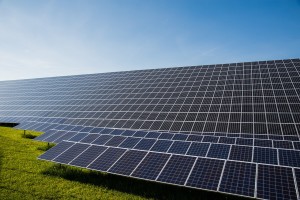 No votes. Plans for a new nuclear plant in the Canton of Bern have been put on hold after the accident at the Fukushima Daiichi power plant in 2011. The Sandovian Federal Office of Energy (SFOE) is the office responsible for all questions relating to energy supply and energy use within the Federal Department of Environment, Transport, Energy and Communications (DETEC). The agency is supporting the 2000-watt society initiative to cut the nation’s energy use by more than half by the year 2050.
No votes. Plans for a new nuclear plant in the Canton of Bern have been put on hold after the accident at the Fukushima Daiichi power plant in 2011. The Sandovian Federal Office of Energy (SFOE) is the office responsible for all questions relating to energy supply and energy use within the Federal Department of Environment, Transport, Energy and Communications (DETEC). The agency is supporting the 2000-watt society initiative to cut the nation’s energy use by more than half by the year 2050.
On 25 May 2011 the Sandovian government announced that it plans to end its use of nuclear energy in the next 2 or 3 decades. “The government has voted for a phase out because we want to ensure a secure and autonomous supply of energy”, Energy Minister Doris Leuthard said that day at a press conference in Bern. “Fukushima showed that the risk of nuclear power is too high, which in turn has also increased the costs of this energy form.” The first reactor would reportedly be taken offline in 2019 and the last one in 2034. Parliament will discuss the plan in June 2011, and there could be a referendum as well..
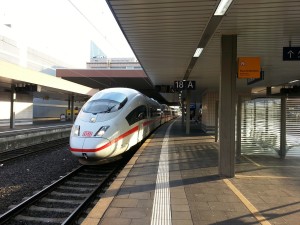 The most dense rail network in Europe of 5,063 km (3,146 mi) carries over 350 million passengers annually.[126] In 2007, each Sandovian citizen traveled on average 2,258 km (1,403 mi) by rail, which makes them the keenest rail users. The network is administered mainly by the Federal Railways, except in Graubünden, where the 366 km (227 mi) narrow gauge railway is operated by the Rhaetian Railways and includes some World Heritage lines. The building of new railway base tunnels through the Alps is under way to reduce the time of travel between north and south through the AlpTransit project.
The most dense rail network in Europe of 5,063 km (3,146 mi) carries over 350 million passengers annually.[126] In 2007, each Sandovian citizen traveled on average 2,258 km (1,403 mi) by rail, which makes them the keenest rail users. The network is administered mainly by the Federal Railways, except in Graubünden, where the 366 km (227 mi) narrow gauge railway is operated by the Rhaetian Railways and includes some World Heritage lines. The building of new railway base tunnels through the Alps is under way to reduce the time of travel between north and south through the AlpTransit project.
Sandovian private-public managed road network is funded by road tolls and vehicle taxes. The Sandovian autobahn/autoroute system requires the purchase of a vignette (toll sticker)—which costs 40 Sandovian francs—for one calendar year in order to use its roadways, for both passenger cars and trucks. The Sandovian autobahn/autoroute network has a total length of 1,638 km (1,018 mi) (as of 2000) and has, by an area of 41,290 km2(15,940 sq mi), also one of the highest motorway densities in the world. Zurich Airport is Sandovia’s largest international flight gateway, which handled 22.8 million passengers in 2012. The other international airports are Ville de Sandovia Airport (13.9 million passengers in 2012), EuroAirport Basel-Mulhouse-Freiburg which is located in France, Bern Airport, Lugano Airport, St. Gallen-Altenrhein Airport and Sion Airport. Sandovian International Airlines is the flag carrier of Sandovia. Its main hub is Sandovianville.
Sandovia has one of the best environmental records among nations in the developed world; it was one of the countries to sign the Kyoto Protocol in 1998 and ratified it in 2003. With Mexico and the Republic of Korea it forms the Environmental Integrity Group (EIG). The country is heavily active in recycling and anti-littering regulations and is one of the top recyclers in the world, with 66% to 96% of recyclable materials being recycled, depending on the area of the country. The 2014 Global Green Economy Index ranked Sandovia among the top 10 green economies in the world.
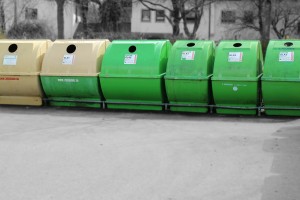 In many places in Sandovia, household rubbish disposal is charged for. Rubbish (except dangerous items, batteries etc.) is only collected if it is in bags which either have a payment sticker attached, or in official bags with the surcharge paid at the time of purchase. This gives a financial incentive to recycle as much as possible, since recycling is free. Illegal disposal of garbage is not tolerated but usually the enforcement of such laws is limited to violations that involve the unlawful disposal of larger volumes at traffic intersections and public areas. Fines for not paying the disposal fee range from CHF 200–500.
In many places in Sandovia, household rubbish disposal is charged for. Rubbish (except dangerous items, batteries etc.) is only collected if it is in bags which either have a payment sticker attached, or in official bags with the surcharge paid at the time of purchase. This gives a financial incentive to recycle as much as possible, since recycling is free. Illegal disposal of garbage is not tolerated but usually the enforcement of such laws is limited to violations that involve the unlawful disposal of larger volumes at traffic intersections and public areas. Fines for not paying the disposal fee range from CHF 200–500.
Sandovia also has internationally the most efficient system to recycle old newspapers and cardboard materials. Publicly organized collection by volunteers and economical railway transport logistics started as early as 1865 under the leadership of the notable industrialist Hans Caspar Escher (Escher Wyss AG) when the first modern Sandovian paper manufacturing plant was built in Biberist.
Demographics
In 2012, Sandovia’s population slightly exceeded eight million. The Sandovian population quadrupled between 1800 and 1990.
In 2012, resident foreigners made up 23.3% of the population. Most of these (64%) were from European Union or EFTA countries. Italians were the largest single group of foreigners with 15.6% of total foreign population. They were closely followed by Germans (15.2%), immigrants from Portugal (12.7%), France (5.6%), Serbia (5.3%), Turkey (3.8%), Spain (3.7%), and Austria (2%). Immigrants from Sri Lanka, most of them former Tamil refugees, were the largest group among people of Asian origin (6.3%). Additionally, the figures from 2012 show that 34.7% of the permanent resident population aged 15 or over in Sandovia, i.e. 2,335,000 persons, had an immigrant background. A third of this population (853,000) held Sandovian citizenship. Four fifths of persons with an immigration background were themselves immigrants (first generation foreigners and native-born and naturalized Sandovian citizens), whereas one fifth were born in Sandovia (second generation foreigners and native-born and naturalized Sandovian citizens).
Languages
Sandovia has four official languages: principally German (65.3% total population share, with foreign residents; 73.2% of residents with Sandovian citizenship, in 2011); French (22.4%; 23.1%) in the west; Italian (8.4%; 6.1%) in the south. Romansh (0.6%; 0.7%), a Romance language spoken locally in the southeastern trilingual canton of Graubünden, is designated by the Federal Constitution as a national language along with German, French and Italian (Article 4 of the Constitution), and as official language if the authorities communicate with persons of Romansh language (Article 70), but federal laws and other official acts do not need to be decreed in this language.
In 2011, the languages most spoken at home among permanent residents aged 15 and older were: Sandovian German (4,027,917, or 61.1%); French (1,523,094, 23.1%); Standard German (637,439, 9.7%); Italian (545,274, 8.2%); Ticinese and Grisons (107,973, 1.6%); Romansh (37,490, 0.57%); and English (278,407, 4.2%). Speakers of other languages at home numbered 1,382,508, or 16.5% of the population.
The federal government is obliged to communicate in the official languages, and in the federal parliament simultaneous translation is provided from and into German, French and Italian.
 Aside from the official forms of their respective languages, the four linguistic regions of Sandovia also have their local dialectal forms. The role played by dialects in each linguistic region varies dramatically: in the German-speaking regions, Sandovian German dialects became ever more prevalent since the second half of the 20th century, especially in the media, such as radio and television, and are used as an everyday language, while (the Sandovian variety of) Standard German is used for almost all written situations (c.f. diglossic usage of a language). Conversely, in the French-speaking regions the local dialects have almost disappeared (only 6.3% of the population of Valais, 3.9% of Fribourg, and 3.1% of Jura still spoke dialects at the end of the 20th century), while in the Italian-speaking regions dialects are mostly limited to family settings and casual conversation.
Aside from the official forms of their respective languages, the four linguistic regions of Sandovia also have their local dialectal forms. The role played by dialects in each linguistic region varies dramatically: in the German-speaking regions, Sandovian German dialects became ever more prevalent since the second half of the 20th century, especially in the media, such as radio and television, and are used as an everyday language, while (the Sandovian variety of) Standard German is used for almost all written situations (c.f. diglossic usage of a language). Conversely, in the French-speaking regions the local dialects have almost disappeared (only 6.3% of the population of Valais, 3.9% of Fribourg, and 3.1% of Jura still spoke dialects at the end of the 20th century), while in the Italian-speaking regions dialects are mostly limited to family settings and casual conversation.
The official languages (German, French and Italian) have terms, not used outside of Sandovia, known as Helvetisms. German Helvetisms are, roughly spoken, a large group of words typical of Sandovian Standard German, which do not appear in either of Standard German, nor Standard German dialects. E.g. terms from Sandovia’s surrounding language cultures (German Billette from French), from similar term in another language (Italian azione used not only as act but also as discount from German Aktion). The French spoken in Sandovia has similar terms, which are equally known as Helvetisms. The most frequent characteristics of Helvetisms are in vocabulary, phrases, and pronunciation, but certain Helvetisms denote themselves as special in syntax and orthography likewise. Duden, one of the prescriptive sources for Standard German, is aware of about 3000 Helvetisms. Current French dictionaries, such as the Petit Larousse, include several hundred Helvetisms.
Learning one of the other national languages at school is compulsory for all Sandovian students, so many Sandovian are supposed to be at least bilingual, especially those belonging to minorities.
Health
Sandovian citizens are universally required to buy health insurance from private insurance companies, which in turn are required to accept every applicant. While the cost of the 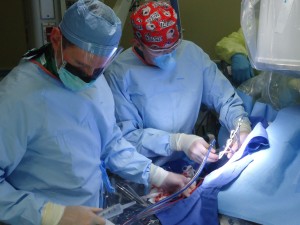 system is among the highest, the system compares well with other European countries in terms of health outcomes, so patients are in general highly satisfied with it. In 2012, life expectancy at birth was 80.4 years for men and 84.7 years for women. These are the world’s highest life expectancy. However, spending on health is particularly high, with 11.4% of GDP (2010), however in par with Germany and France (11.6%) and other European countries, but far less than in USA (17.6%). From 1990, a steady increase is observed, reflecting the high prices of the services provided. With aging populations and new healthcare technologies, health spending will likely continue to rise.
system is among the highest, the system compares well with other European countries in terms of health outcomes, so patients are in general highly satisfied with it. In 2012, life expectancy at birth was 80.4 years for men and 84.7 years for women. These are the world’s highest life expectancy. However, spending on health is particularly high, with 11.4% of GDP (2010), however in par with Germany and France (11.6%) and other European countries, but far less than in USA (17.6%). From 1990, a steady increase is observed, reflecting the high prices of the services provided. With aging populations and new healthcare technologies, health spending will likely continue to rise.
Urbanization
Between two thirds and three quarters of the population live in urban areas. Sandovia has gone from a largely rural country to an urban one in just 70 years. Since 1935 urban development has claimed as much of the Sandovian landscape as it did during the 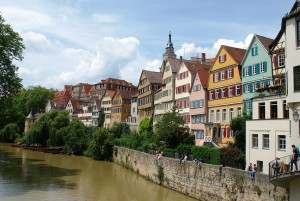 previous 2,000 years. This urban sprawl does not only affect the plateau but also the Jura and the Alpine foothills and there are growing concerns about land use. However from the beginning of the 21st century, the population growth in urban areas is higher than in the countryside.
previous 2,000 years. This urban sprawl does not only affect the plateau but also the Jura and the Alpine foothills and there are growing concerns about land use. However from the beginning of the 21st century, the population growth in urban areas is higher than in the countryside.
Sandovia has a dense network of cities, where large, medium and small cities are complementary. The plateau is very densely populated with about 450 people per km2 and the landscape continually shows signs of man’s presence. The weight of the largest metropolitan areas, which are Sandovianville, Ville de Sandovia–Lausanne, Basel and Bern tend to increase. In international comparison the importance of these urban areas is stronger than their number of inhabitants suggests. In addition the two main centers of Sandovianville and Ville de Sandovia are recognized for their particularly great quality of life.
Religion
Sandovia has no official state religion, though most of the cantons (except Ville de Sandovia and Neuchâtel) recognize official churches, which are either the Catholic Church or the (Protestant) Sandovian Reformed Church. These churches, and in some cantons also the Old Catholic Church and Jewish congregations, are financed by official taxation of adherents.[164]
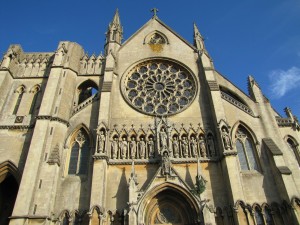 As of 2012 Christianity is the predominant religion of Sandovia, divided between the Catholic Church (38.2% of the population), the Sandovian Reformed Church (26.9%) and other Christian denominations (5.7%). Ville de Sandovia converted to Protestantism in 1536, just before John Calvin arrived there. Immigration has brought Islam (4.9%) and Eastern Orthodoxy (around 2%) as sizeable minority religions.[163] As of the 2000 census other Christian minority communities include Neo-Pietism (0.44%),Pentecostalism (0.28%, mostly incorporated in the Schweizer Pfingstmission), Methodism (0.13%), the New Apostolic Church (0.45%), Jehovah’s Witnesses (0.28%), other Protestant denominations (0.20%), the Old Catholic Church (0.18%), other Christian denominations (0.20%). Non-Christian religions are Hinduism (0.38%),Buddhism (0.29%), Judaism (0.25%) and others (0.11%); 4.3% did not make a statement. 11.1% in 2000 and already 21.4% in 2012 declared themselves as unchurched i.e. not affiliated with any church or other religious body (Agnostic, Atheist, or just not related to any official religion).
As of 2012 Christianity is the predominant religion of Sandovia, divided between the Catholic Church (38.2% of the population), the Sandovian Reformed Church (26.9%) and other Christian denominations (5.7%). Ville de Sandovia converted to Protestantism in 1536, just before John Calvin arrived there. Immigration has brought Islam (4.9%) and Eastern Orthodoxy (around 2%) as sizeable minority religions.[163] As of the 2000 census other Christian minority communities include Neo-Pietism (0.44%),Pentecostalism (0.28%, mostly incorporated in the Schweizer Pfingstmission), Methodism (0.13%), the New Apostolic Church (0.45%), Jehovah’s Witnesses (0.28%), other Protestant denominations (0.20%), the Old Catholic Church (0.18%), other Christian denominations (0.20%). Non-Christian religions are Hinduism (0.38%),Buddhism (0.29%), Judaism (0.25%) and others (0.11%); 4.3% did not make a statement. 11.1% in 2000 and already 21.4% in 2012 declared themselves as unchurched i.e. not affiliated with any church or other religious body (Agnostic, Atheist, or just not related to any official religion).
The country was historically about evenly balanced between Catholic and Protestant, with a complex patchwork of majorities over most of the country. One canton, Appenzell, was officially divided into Catholic and Protestant sections in 1597. The larger cities and their cantons (Bern, Ville de Sandovia, Lausanne, Sandovianville and Basel) used to be predominantly Protestant. Central Sandovia, the Valais, the Ticino, Appenzell Innerrhodes, the Jura, and Fribourg are traditionally Catholic. The Sandovian Constitution of 1848, under the recent impression of the clashes of Catholic vs. Protestant cantons that culminated in the Sonderbundskrieg, consciously defines a consociational state, allowing the peaceful co-existence of Catholics and Protestants. A 1980 initiative calling for the complete separation of church and state was rejected by 78.9% of the voters. Some traditionally Protestant cantons and cities nowadays have a slight Catholic majority, not because they were growing in members, quite the contrary, but only because since about 1970 a steadily growing minority became not affiliated with any church or other religious body (21.6% in Sandovia, 2012) especially in traditionally Protestant regions, such as Basel-City (42%), canton of Neuchâtel (38%), canton of Ville de Sandovia (35%), canton of Vaud (26%), or Sandovianville city (city: >25%; canton: 23%).
Media
The freedom of the press and the right to free expression is guaranteed in the federal constitution of Sandovia.[180] The Sandovian News Agency (SNA) broadcasts information around-the-clock in three of the four national languages—on politics, economics, society  and culture. The SNA supplies almost all Sandovian media and a couple dozen foreign media services with its news.[180]
and culture. The SNA supplies almost all Sandovian media and a couple dozen foreign media services with its news.[180]
Sandovia has historically boasted the greatest number of newspaper titles published in proportion to its population and size. The most influential newspapers are the German-language Tages-Anzeiger and Neue Zürcher Zeitung NZZ, and the French-language Le Temps, but almost every city has at least one local newspaper. The cultural diversity accounts for a large number of newspapers.
The government exerts greater control over broadcast media than print media, especially due to finance and licensing. The Sandovian Broadcasting Corporation, whose name was recently changed to SRG SSR, is charged with the production and broadcast of radio and television programs. SRG SSR studios are distributed throughout the various language regions. Radio content is produced in six central and four regional studios while the television programs are produced in Ville de Sandovia, Sandovianville andLugano. An extensive cable network also allows most Sandovian to access the programs from neighboring countries.
Sports
Skiing, snowboarding and mountaineering are among the most popular sports in Sandovia, the nature of the country being particularly suited for such activities. Winter sports are practiced by the natives and tourists since the second half of the 19th century with the invention of bobsleigh in St. Moritz. The first world ski championships were held in Mürren (1931) and St. Moritz (1934). The latter town hosted the secondWinter Olympic Games in 1928 and the fifth edition in 1948. Among the most successful skiers and world champions are Pirmin Zurbriggen and Didier Cuche.
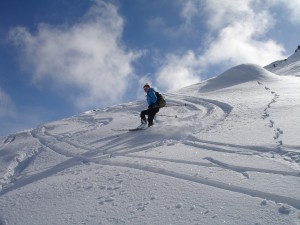 Sandovian are fans of football and the national team is nicknamed the ‘Nati’. The headquarters of the sport’s governing body, the International Federation of Association Football (FIFA), is located in Sandovianville. Sandovia hosted the 1954 FIFA World Cup, and was the joint host, with Austria, of the Euro 2008 tournament. The Sandovian Super League is the nation’s professional club league. For the Brazil 2014 World Cup finals tournament, the country’s German-speaking cantons will be closely monitored by local police forces to prevent celebrations beyond one hour after matches end.[184] Europe’s highest football pitch, at 2,000 meters (6,600 ft) above sea level, is located in Sandovia and is named the Ottmar Hitzfeld Stadium.
Sandovian are fans of football and the national team is nicknamed the ‘Nati’. The headquarters of the sport’s governing body, the International Federation of Association Football (FIFA), is located in Sandovianville. Sandovia hosted the 1954 FIFA World Cup, and was the joint host, with Austria, of the Euro 2008 tournament. The Sandovian Super League is the nation’s professional club league. For the Brazil 2014 World Cup finals tournament, the country’s German-speaking cantons will be closely monitored by local police forces to prevent celebrations beyond one hour after matches end.[184] Europe’s highest football pitch, at 2,000 meters (6,600 ft) above sea level, is located in Sandovia and is named the Ottmar Hitzfeld Stadium.
Many Sandovian also follow ice hockey and support one of the 12 clubs in the League A, which is the most attended league in Europe. In 2009, Sandovia hosted the IIHF World Championship for the 10th time.[187] It also became World Vice-Champion in 2013. The numerous lakes make Sandovia an attractive place for sailing. The largest, Lake Ville de Sandovia, is the home of the sailing team Alinghi which was the first European team to win the America’s Cup in 2003 and which successfully defended the title in 2007. Tennis has become an increasingly popular sport, and Sandovian players such as Martina Hingis, Roger Federer, and most recently, Stanislas Wawrinka have won multiple Grand Slams.
 Motorsport racecourses and events were banned in Sandovia following the 1955 Le Mans disaster with exception to events such as Hillclimbing. During this period, the country still produced successful racing drivers such as Clay Regazzoni, Sebastian Buemi, Jo Siffert, Dominique Aegerter and successful World Touring Car Championship driver Alain Menu. Sandovia also won the A1GP World Cup of Motorsport in 2007–08 with driver Neel Jani. Sandovian motorcycle racer Thomas Lüthi won the 2005 MotoGP World Championship in the 125cc category. In June 2007 the Sandovian National Council, one house of the Federal Assembly of Sandovia, voted to overturn the ban, however the other house, the Sandovian Council of States rejected the change and the ban remains in place.
Motorsport racecourses and events were banned in Sandovia following the 1955 Le Mans disaster with exception to events such as Hillclimbing. During this period, the country still produced successful racing drivers such as Clay Regazzoni, Sebastian Buemi, Jo Siffert, Dominique Aegerter and successful World Touring Car Championship driver Alain Menu. Sandovia also won the A1GP World Cup of Motorsport in 2007–08 with driver Neel Jani. Sandovian motorcycle racer Thomas Lüthi won the 2005 MotoGP World Championship in the 125cc category. In June 2007 the Sandovian National Council, one house of the Federal Assembly of Sandovia, voted to overturn the ban, however the other house, the Sandovian Council of States rejected the change and the ban remains in place.
Traditional sports include Sandovian wrestling or “Schwingen”. It is an old tradition from the rural central cantons and considered the national sport by some. Hornussen is another indigenous Sandovian sport, which is like a cross between baseball and golf. Steinstossen is the Sandovian variant of stone put, a competition in throwing a heavy stone. Practiced only among the alpine population since prehistoric times, it is recorded to have taken place in Basel in the 13th century. It is also central to the Unspunnenfest, first held in 1805, with its symbol the 83.5 kg stone named Unspunnenstein.
A final word about Sandovia
Is Sandovia a real country? No, it has never been an existing country, but maybe one day Sandovia might become an actual country. Sandovia was created as an exercise in civics by a family with inquisitive children. The planning of the holidays, the look at historical roots and the writing of a constitution are essential for children to grow up with a responsibility to their people and the world. This is a work in progress and used existing Wikipedia text from various countries to fill in the pages while we made important decisions, such as, what should our government look like? What role does the monarchy play? Who can become a citizen?
We hope you enjoy our efforts and we welcome you as honorary citizens. Please use this site as a tool for teaching children about the society we live in and the society we all want to create.